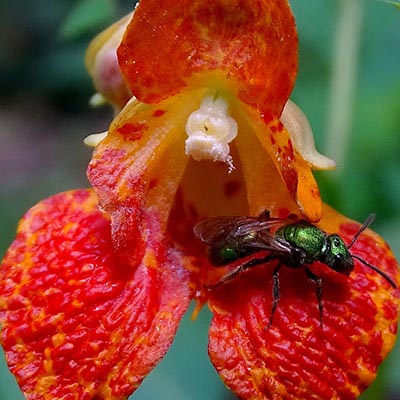 Some people will spend a large part of their lifetime searching for jewels or treasure. Others simply take a hike and find a different kind of jewel scattered across the forest floor in the form of beautiful flowers. Jewelweed, or touch-me-not, has fascinated many with its beauty, usefulness, and surprises.
Some people will spend a large part of their lifetime searching for jewels or treasure. Others simply take a hike and find a different kind of jewel scattered across the forest floor in the form of beautiful flowers. Jewelweed, or touch-me-not, has fascinated many with its beauty, usefulness, and surprises.
Jewelweed has beauty in the small flowers that look like pendants dangling from a graceful stem. There are two varieties of jewelweed. Spotted touch-me-not has orange flowers with reddish-brown spots and pale touch-me-not has yellow flowers. Jewelweed might also get its name from the way dew drops tend to bead up on the surface of the leaf and look like jewels.
Jewelweed has usefulness in the strong stem of the plant. The stem has a clear sap inside that is used to ease the itch of rashes from poison ivy and stinging nettle that are sometimes found growing near the plant.
Jewelweed also holds an element of surprise inside its tiny seedpods that form in late summer. The edible seeds inside are held under great pressure until slightly touched by animals or humans. Then, the seeds are launched into the air up to five feet away from the plant. Try cupping your hands around a seedpod until it bursts and enjoys the seeds for a tasty treat.
Hummingbirds stop to enjoy the nectar from the flowers on their journey south because jewelweed conveniently blooms in late summer to early fall. Hummingbirds have long tongues adapted to reach the nectar at the end of the flower’s unique spur. Insects, birds, and humans have enjoyed the many benefits of jewelweed for years. Now you, too, can appreciate this jeweled wonder.
